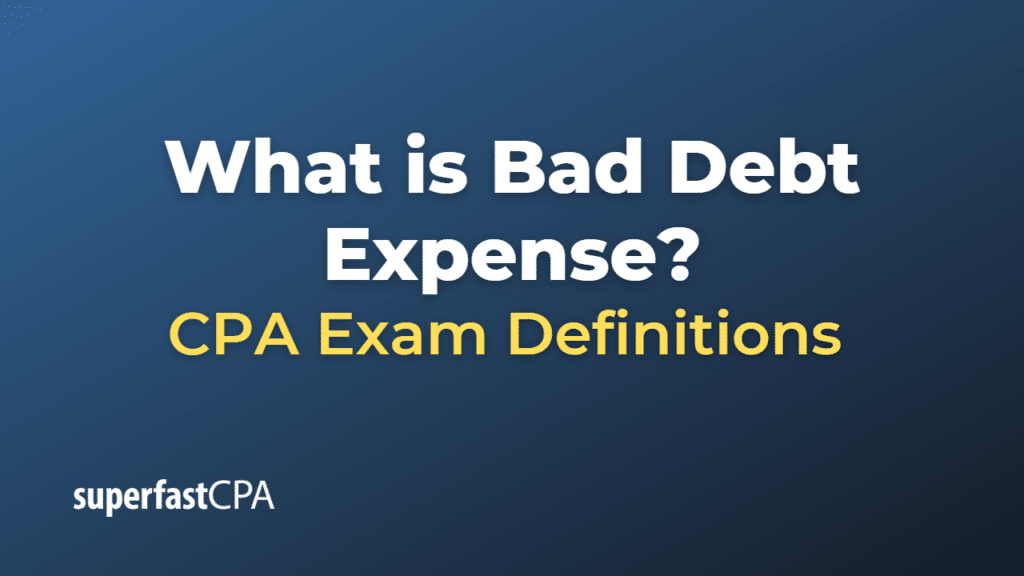Bad Debt Expense
Bad debt expense is an expense account that represents the estimated amount of receivables that a company will not be able to collect from its customers. It is a part of a company’s normal operations when extending credit to customers, and it is recognized as an expense on the income statement.
Bad debt expense arises when customers fail to pay their outstanding invoices or loans, either due to financial difficulties, bankruptcy, or other reasons. Companies use one of two methods to account for bad debt expense:
- Direct Write-off Method: This method records bad debt expense only when a specific account is deemed uncollectible. At that point, the company writes off the bad debt by reducing the accounts receivable balance and recognizing the expense on the income statement.
- Allowance Method: This method estimates bad debt expense based on historical experience or industry trends. Companies create an allowance for doubtful accounts, which is a contra-asset account that reduces accounts receivable on the balance sheet. The bad debt expense is recognized on the income statement, and the allowance for doubtful accounts is adjusted accordingly.
The allowance method is generally preferred under Generally Accepted Accounting Principles (GAAP) since it better matches revenues and expenses in the same accounting period.
Example of Bad Debt Expense
Let’s assume Company XYZ sells products on credit and extends a $10,000 credit line to Customer A. Based on past experience, Company XYZ estimates that 5% of its credit sales may not be collected.
Example using the Allowance Method:
- Company XYZ records the credit sale:
Debit Accounts Receivable: $10,000
Credit Sales Revenue: $10,000 - Company XYZ estimates its bad debt expense and adjusts the allowance for doubtful accounts:
Debit Bad Debt Expense: $500 (5% of $10,000)
Credit Allowance for Doubtful Accounts: $500
The income statement will show a bad debt expense of $500, and the balance sheet will show an accounts receivable balance of $10,000 and an allowance for doubtful accounts of $500, resulting in a net receivable balance of $9,500.
Later, if Customer A cannot pay their outstanding invoice and the debt is deemed uncollectible, Company XYZ writes off the bad debt:
- Debit Allowance for Doubtful Accounts: $10,000
Credit Accounts Receivable: $10,000
In this case, the accounts receivable balance is reduced, and the net receivable remains at $9,500.
The allowance method ensures that the bad debt expense is recognized in the same period as the corresponding revenue, following the matching principle in accounting.













